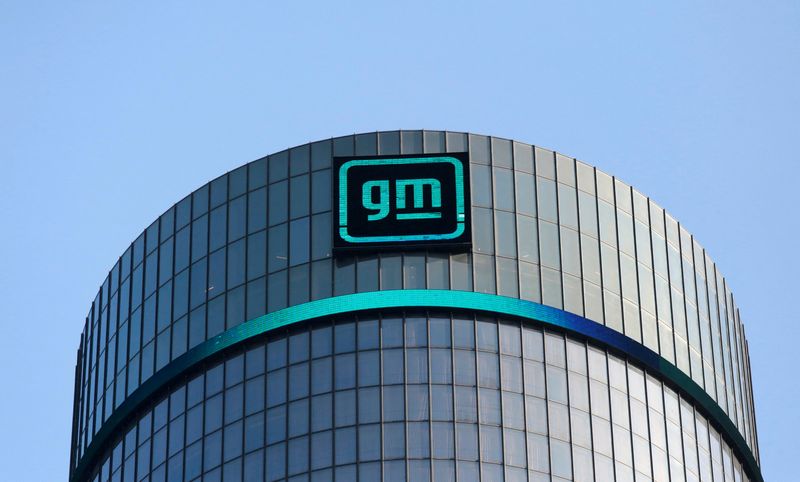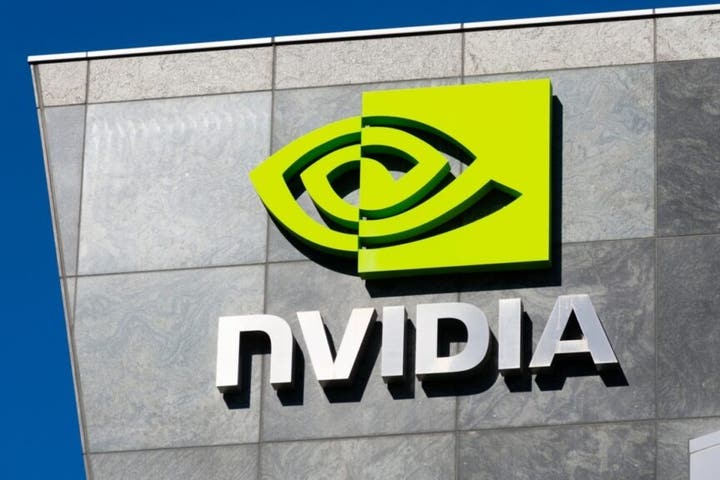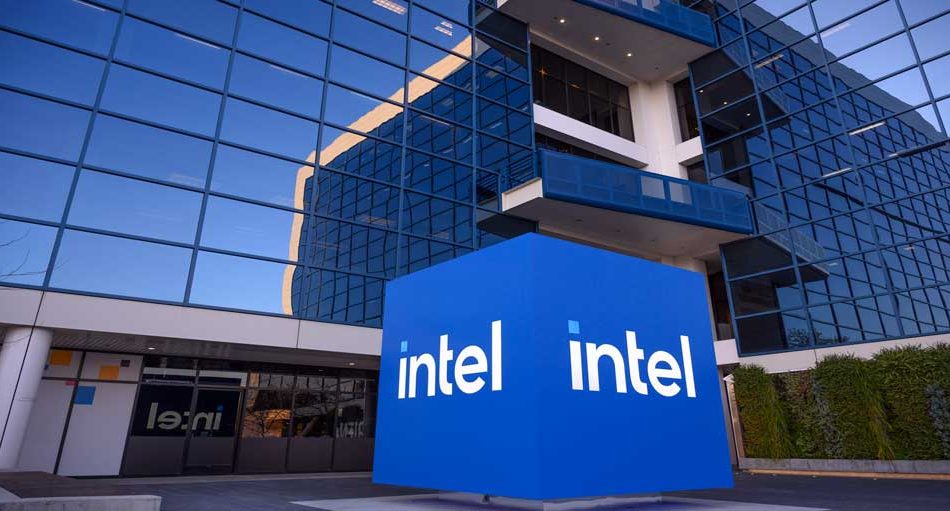U.S. stock rally broadens as investors await Fed
By David Randall
NEW YORK (Reuters) – A broadening rally in U.S. stocks is offering an encouraging signal to investors worried about concentration in technology shares, as markets await key jobs data and the Federal Reserve’s expected rate cuts in September.
As the market’s fortunes keep rising and falling with big tech stocks such as Nvidia and Apple, investors are also putting money in less-loved value stocks and small caps, which are expected to benefit from lower interest rates. The Fed is expected to kick off a rate-cutting cycle at its monetary policy meeting on Sept. 17-18.
Many investors view the broadening trend, which picked up steam last month before faltering during an early August sell-off, as a healthy development in a market rally led by a cluster of giant tech names. Chipmaker Nvidia, which has benefited from bets on artificial intelligence, alone has accounted for roughly a quarter of the S&P 500’s year-to-date gain of 18.4%.
“No matter how you slice and dice it you have seen a pretty meaningful broadening out and I think that has legs,” said Liz Ann Sonders, chief investment officer at Charles Schwab.
Value stocks are those of companies trading at a discount on metrics like book value or price-to-earnings and include sectors such as financials and industrials. Some investors believe rallies in these sectors and small caps could go further if the Fed cuts borrowing costs while the economy stays healthy.
The market’s rotation has recently accelerated, with 61% of stocks in the S&P 500 outperforming the index in the past month, compared to 14% outperforming over the past year, Charles Schwab data showed.
Meanwhile, the so-called Magnificent Seven group of tech giants – which includes Nvidia, Tesla and Microsoft – have underperformed the other 493 stocks in the S&P 500 by 14 percentage points since the release of a weaker-than-expected U.S. inflation report on July 11, according to an analysis by BofA Global Research.
Stocks have also held up after an Nvidia forecast failed to meet lofty investor expectations earlier this week, another sign that investors may be looking beyond tech. The equal weight S&P 500 index, a proxy for the average stock, hit a fresh record this week and is up around 10.5% year-to-date, narrowing its performance gap with the S&P 500.
“When market breadth is improving, the message is that an increasing number of stocks are rallying on expectations that economic conditions will support earnings growth and profitability,” analysts at Ned David Research wrote.
Value stocks that have performed well this year include General Electric and midstream energy company Targa Resources, which are up 70% and 68%, respectively. The small-cap focused Russell 2000 index, meanwhile, is up 8.5% from its lows of the month, though it has not breached its July peak.
Next Friday’s non-farm payrolls report could help bolster the case for a broader market rally if it shows the labor market is cooling at a steady, though not alarming pace, said David Lefkowitz, head of U.S. Equities for UBS Global Wealth Management.
The jobs report “tends to be one of the more market moving releases in general, and right now it’s going to get even more attention than normal.”
Investors are unlikely to turn their back on tech stocks, particularly if volatility gives them a chance to buy on the cheap, said Jason Alonzo, a portfolio manager with Harbor Capital.
Technology stocks are expected to post above-market earnings growth over every quarter through 2025, with third-quarter earnings coming in at 15.3% compared with a 7.5% gain for the S&P 500 as a whole, according to LSEG data.
“People will sometimes take a deep breath after a nice run and look at other opportunities, but technology is still the clearest driver of growth, particularly the AI theme which is innocent until proven guilty,” Alonzo said.
(Reporting by David Randall; Editing by Ira Iosebashvili and Richard Chang)
GM must face big class action over faulty transmissions
By Jonathan Stempel
(Reuters) – General Motors (GM) was ordered by a federal appeals court to face a class action claiming it violated laws of 26 U.S. states by knowingly selling several hundred thousand cars, trucks and SUVs with faulty transmissions.
The 6th U.S. Circuit Court of Appeals said a lower court judge had discretion to let drivers sue in groups over Cadillac, Chevrolet and GMC vehicles equipped with 8L45 or 8L90 eight-speed automatic transmissions, and sold in the 2015 through 2019 model years.
Drivers said the vehicles shudder and shake in higher gears, and hesitate and lurch in lower gears, even after repair attempts. They also accused GM of telling dealers to provide assurance that harsh shifts were “normal.”
GM did not immediately respond on Thursday to requests for comment. The decision was issued on Wednesday by a three-judge panel of the Cincinnati-based appeals court.
Class actions can result in greater recoveries at lower cost than if plaintiffs were forced to sue individually.
The GM litigation covers about 800,000 vehicles, including 514,000 in the certified classes.
Vehicles include the Cadillac CTS, CT6 and Escalade; Chevrolet Camaro, Colorado, Corvette and Silverado; and GMC Canyon, Sierra and Yukon, among others.
In opposing class certification, GM said most class members never experienced problems and therefore lacked standing to sue.
It also said there were too many differences among class members to justify group lawsuits.
Circuit Judge Karen Nelson Moore, however, said overpaying for allegedly defective vehicles was enough to establish standing.
She also said “exactly how, and to what extent, each of the individual plaintiffs experienced a shudder or shift quality issue is irrelevant” to whether GM concealed known defects, and whether drivers would have found that information material.
The court also rejected GM’s argument that many potential claims belonged in arbitration.
It returned the case to U.S. District Judge David Lawson in Detroit, who certified the classes in March 2023.
“We look forward to holding GM accountable before a Michigan jury,” Ted Leopold, a Cohen Milstein Sellers & Toll partner representing the drivers, said in a statement.
The case is Speerly et al v. General Motors LLC, 6th U.S. Circuit Court of Appeals, No. 23-1940.
(Reporting by Jonathan Stempel in New York; Editing by Nick Zieminski)
Ready To Retire On A Single Magnificent 7 Stock? Poll Reveals Top Pick —And It's Not Apple
Benzinga and Yahoo Finance LLC may earn commission or revenue on some items through the links below.
Investors have many options when it comes to investing for retirement.
Among the available strategies are to invest in index funds, mutual funds, ETFs or choose individual stocks. Benzinga recently asked which of the Magnificent 7 stocks was the best option for retirement.
What Happened: The Magnificent 7 stocks, a select group of highly valuable and widely recognized investments, are often associated with high-growth financials and leading companies in the technology sector.
The Magnificent 7 stocks are Apple (NASDAQ:APPL), Amazon (NASDAQ:AMZN), Alphabet (NASDAQ:GOOG) (NASDAQ:GOOGL), Meta Platforms (NASDAQ:META), Microsoft Corporation (NASDAQ:MSFT), NVIDIA Corporation (NASDAQ:NVDA) and Tesla (NASDAQ:TSLA).
Trending Now:
-
This billion-dollar fund has invested in the next big real estate boom, here’s how you can join for $10.
This is a paid advertisement. Carefully consider the investment objectives, risks, charges and expenses of the Fundrise Flagship Fund before investing. This and other information can be found in the Fund’s prospectus. Read them carefully before investing. -
A billion-dollar investment strategy with minimums as low as $10 — you can become part of the next big real estate boom today.
This is a paid advertisement. Carefully consider the investment objectives, risks, charges and expenses of the Fundrise Flagship Fund before investing. This and other information can be found in the Fund’s prospectus. Read them carefully before investing.
“If you had to invest your entire retirement account into just one Magnificent 7 stock, which would you choose?” Benzinga asked.
Here are the results:
Nvidia: 33%
Apple: 21%
Microsoft: 17%
Amazon: 14%
Tesla: 7%
Alphabet: 4%
Meta Platforms: 4%
The results are hardly surprising given Nvidia’s status as one of the most talked-about growth stories in recent years, with the stock significantly outperforming over the past year.
Apple ranked second in the poll and comes as the company is among the top performers over the last five years and has a loyal fan base.
Why It’s Important: The Magnificent 7 stocks have outperformed the broader stock market over the last five years and 10 years based on the returns compared to the SPDR S&P 500 ETF Trust (NYSE:SPY), which tracks the S&P 500.
Here’s a look at the five-year and 10-year returns of the Magnificent 7 stocks:
|
Stock |
5-Year Returns |
10-Year Returns |
|
Nvidia |
+2,962% |
+25,603% |
|
Apple |
+337% |
+822% |
|
Microsoft |
+200% |
+802% |
|
Amazon |
+95% |
+900% |
|
Tesla |
+1,291% |
+1,031% |
|
Alphabet |
+177% |
+451% |
|
Meta |
+180% |
+572% |
Read More:
For comparison, the SPDR S&P 500 ETF is up 92% over the last five years and up 179% over the last 10 years. Each of the Magnificent 7 stocks beats the ETF for both time periods, with many more than doubling its returns.
Nvidia recently topped a poll on which Magnificent 7 stock Benzinga readers would invest $1,000 in today. It was Amazon.com that topped Nvidia in a poll on which Magnificent 7 stock could best weather a recession.
For investors looking to get exposure to all the Magnificent 7 stocks, there is also the Roundhill Magnificent Seven ETF (NASDAQ:MAGS) which holds the seven companies.
The study was conducted by Benzinga on Aug. 26 and Aug. 27, 2024, and included the responses of a diverse population of adults 18 or older. Opting into the survey was completely voluntary, with no incentives offered to potential respondents. The study reflects results from 112 adults.
A 9% Return In Just 3 Months
EquityMultiple’s ‘Alpine Note — Basecamp Series’ is turning heads and opening wallets. This short-term note investment offers investors a 9% rate of return (APY) with just a 3 month term and $5K minimum. The Basecamp rate is at a significant spread to t-bills. This healthy rate of return won’t last long. With the Fed poised to cut interest rates in the near future, now could be the time to lock in a favorable rate of return with a flexible, relatively liquid investment option.
What’s more, Alpine Note — Basecamp can be rolled into another Alpine Note for compounding returns, or into another of EquityMultiple’s rigorously vetted real estate investments, which also carry a minimum investment of just $5K. Basecamp is exclusively open to new investors on the EquityMultiple platform.
Looking for fractional real estate investment opportunities? The Benzinga Real Estate Screener features the latest offerings.
This article Ready To Retire On A Single Magnificent 7 Stock? Poll Reveals Top Pick —And It’s Not Apple originally appeared on Benzinga.com
3 Magnificent Stocks That Created Many Millionaires and Will Continue to Make More
One of the coolest parts about investing is that there are a variety of ways to reach your goal. It doesn’t matter whether you prefer high-flying growth stocks or slow and steady dividend stocks; you can build wealth with almost any strategy. The most important thing is buying stocks representing high-quality companies. A quality business steadily grows and creates value for its shareholders, making you wealthy over time.
One stumbling block for this investing strategy is the propensity to overthink investing. Overthinking can sometimes cause investors to pass on proven winners to instead focus on riskier stocks that might be successful.
Here are three magnificent stocks that have made people rich and have the ingredients to do it for you as well.
1. Amazon
E-commerce and technology company Amazon (NASDAQ: AMZN) is the textbook example of a millionaire-making stock. Its shares have returned over 179,000% since its IPO in 1997. How? By dominating colossal market opportunities. Amazon started as an online bookstore in the earliest days of e-commerce. Today, Amazon sells virtually anything you could think of and controls almost 40% of online sales in the United States. However, Amazon didn’t stop there; its innovative culture led it to sell its IT infrastructure to the public as AWS, the world’s leading cloud platform today. Roughly 200 million households subscribe to Amazon’s monthly Prime membership, which it has used to build growing businesses in advertising and streaming entertainment content.
Amazon’s massive size gives it cost advantages against most competitors across its business models. Additionally, these various businesses have room to keep growing for the foreseeable future. For example, online shopping is still just 16% of total retail sales in America. Meanwhile, global cloud infrastructure spending is poised to grow by nearly 20% annually over the coming years on cloud computing and artificial intelligence (AI) demand.
Analysts believe the company’s earnings will increase by 27% annually over the long term, which means this multitrillion-dollar company should continue compounding wealth for those holding the stock.
2. Chipotle Mexican Grill
Successful companies are frequently boring; Chipotle Mexican Grill (NYSE: CMG) sells burritos and rice bowls to hungry customers. Yet, the stock has appreciated over 6,000% since going public in 2006. Chipotle’s fresh and popular products have fueled steady store expansion for three decades. Today, the company owns and operates roughly 3,146 stores (primarily) in the United States and international markets like Canada and the United Kingdom. The company splits its profits between opening stores and repurchasing its stock to help boost earnings per share, ultimately helping drive its share price higher. Chipotle has reduced its share count by nearly 12% over the past decade.
The great thing about a business like this is that it’s predictable. Chipotle shouldn’t have any problems continuing its success as long as people still enjoy its food. More mature restaurant chains have thousands more stores, meaning Chipotle can continue opening stores for years. Its Tex-Mex cuisine is also popular worldwide, so international markets could play a more significant role in Chipotle’s growth as its footprint in the U.S. market matures. Analysts believe Chipotle can grow earnings by 22% annually moving forward, so there is still plenty of upside ahead for long-term investors.
3. Coca-Cola
Beverage giant Coca-Cola (NYSE: KO) is a Warren Buffett favorite and bona fide wealth-building machine. Coca-Cola doesn’t grow fast, but the slow and steady winner has returned over 12,000% in total gains to investors since the early 1970s. The company sells dozens of brands of soda, water, juices, tea, and other beverages worldwide through grocery stores, vending machines, restaurants, and just about anywhere you might find a drink. Coca-Cola is highly profitable, so it shares its profits with investors via dividends. The company has paid and raised its dividend for 62 consecutive years. Want to get the most out of Coca-Cola stock? Buy, hold, and reinvest those dividends to buy more shares.
It’s a boring company, but you might regret passing on it. Although Coca-Cola is not fast-growing, it still has a tremendous runway for long-term expansion. The beverage industry is so fragmented that an estimated 70% of consumers in developed countries still don’t drink a Coca-Cola product more than once a week. The penetration is even lower in emerging markets like Africa, India, and Latin America. Coca-Cola’s brands are known worldwide, so the company should tap into that growth as economies mature and consumers have the discretionary income for things like packaged beverages. Analysts believe Coca-Cola will grow earnings by 6% annually over the long term, adding to the stock’s nearly 3% dividend yield.
Should you invest $1,000 in Amazon right now?
Before you buy stock in Amazon, consider this:
The Motley Fool Stock Advisor analyst team just identified what they believe are the 10 best stocks for investors to buy now… and Amazon wasn’t one of them. The 10 stocks that made the cut could produce monster returns in the coming years.
Consider when Nvidia made this list on April 15, 2005… if you invested $1,000 at the time of our recommendation, you’d have $769,685!*
Stock Advisor provides investors with an easy-to-follow blueprint for success, including guidance on building a portfolio, regular updates from analysts, and two new stock picks each month. The Stock Advisor service has more than quadrupled the return of S&P 500 since 2002*.
*Stock Advisor returns as of August 26, 2024
John Mackey, former CEO of Whole Foods Market, an Amazon subsidiary, is a member of The Motley Fool’s board of directors. Justin Pope has no position in any of the stocks mentioned. The Motley Fool has positions in and recommends Amazon and Chipotle Mexican Grill. The Motley Fool recommends the following options: short September 2024 $52 puts on Chipotle Mexican Grill. The Motley Fool has a disclosure policy.
3 Magnificent Stocks That Created Many Millionaires and Will Continue to Make More was originally published by The Motley Fool
The Recent Tech Sell-Off Made These 2 Artificial Intelligence (AI) Stocks Even Better Buys
Artificial intelligence (AI) has given many technology companies a big boost since ChatGPT gained immense popularity toward the end of 2022. Still, it hasn’t been smooth sailing in recent months as doubts are being raised about the potential of this technology to deliver financial returns in lieu of the massive investments that are being made in AI infrastructure.
Throw in the inflated valuations following the tremendous surge in tech stocks in the past year and a half thanks to AI, and it is easy to see why Citigroup advised investors last month to book profits in high-flying AI stocks. All this explains why the Nasdaq-100 Technology Sector index has retreated close to 2% in the past month.
However, this sell-off means investors can now buy certain AI stocks at attractive valuations. Let’s take a closer look at two such names.
1. Micron Technology
Shares of Micron Technology (NASDAQ: MU) are down nearly 10% in the past month. What’s more, the stock has lost more than 35% of its value in the past three months. Now, investors can buy Micron stock at an attractive 5 times sales, a discount to the U.S. technology sector’s sales multiple of 8.
The stock’s forward earnings multiple of 12 also represents a big discount to the Nasdaq-100 index’s forward earnings multiple of 30 (using the index as a proxy for tech stocks). Investors should consider buying shares of this memory specialist hand over fist at its current valuation because of the outstanding growth in its top and bottom lines.
The chipmaker’s revenue in the third quarter of fiscal 2024 (which ended on May 30) shot up a remarkable 81% from the same quarter last year to $6.8 billion. Micron also swung to a non-GAAP profit of $0.62 from a $1.43 per share loss in the year-ago period. It has now guided for revenue of $7.6 billion for the current quarter, along with adjusted earnings of $1.08 per share.
Based on the guidance and its revenue in the first nine months of the year, Micron’s fiscal 2024 revenue should end up at $25 billion, a 61% jump over the previous fiscal year. Additionally, it is expected to post a profit of $1.22 per share, compared to a loss of $4.45 per share in fiscal 2023. These terrific numbers suggest that the sharp pullback in Micron’s stock of late doesn’t seem justified.
That’s especially true considering its revenue in the upcoming fiscal year could jump a solid 54% to $38.5 billion, as per consensus estimates. Even better, the company’s earnings are forecasted to multiply in fiscal 2025 to $9.44 per share. Such outstanding growth in Micron’s revenue and earnings will be driven by an AI-fueled recovery in the memory market.
AI is positively impacting the memory market in multiple ways. From the booming demand for high-bandwidth memory (HBM), which is deployed in AI graphics processing units (GPUs) to the increasing memory content in computers and smartphones, it is easy to see why the memory market is set to enjoy massive growth.
Sales of memory chips are expected to jump from $92 billion last year to $163 billion this year, an increase of 77%. The market’s growth is expected to continue in 2025, with its overall size hitting $204 billion. Not surprisingly, Micron is expected to deliver outstanding growth in its revenue and earnings. Given the valuation it is trading at, investors would do well to buy it before its fortunes turn around.
2. Snowflake
Snowflake (NYSE: SNOW) is another company that has witnessed a significant pullback in its stock price of late, dropping 24% in the past three months. The stock was clobbered recently after Snowflake released fiscal 2025 second-quarter results on Aug. 21. However, a closer look at Snowflake’s strategy of introducing AI-specific products to customers using its data cloud platform is likely to help accelerate its growth in the future.
Snowflake’s cloud-based data platform allows customers to consolidate their data onto a single platform. They can then use that data to build applications, derive insights, or use AI to solve problems. The company is set to offer multiple AI applications to customers under its Cortex AI platform.
From allowing customers to quickly locate information within their data set with the help of generative AI to giving them access to popular large language models (LLMs) so that they can build applications with their proprietary data without having to invest in expensive infrastructure, Snowflake seems to be doing the right thing to ensure that it can drive greater customer spending.
Market research firm IDC projects that the demand for AI software platforms could grow at an annual rate of 40.6% through 2028 as organizations find ways to integrate AI within their business and develop and deploy AI applications. The good part is that Snowflake’s focus on offering AI services drives outstanding growth in its remaining performance obligations (RPO).
The company’s RPO increased an impressive 48% year over year last quarter to $5.2 billion. That was higher than the 29% year-over-year growth in Snowflake’s revenue during the quarter to $869 million. A company’s RPO refers to the total value of its future contracts at the end of a period, so the faster growth in this metric, when compared to the actual growth in its top line, suggests that its revenue growth could accelerate in the future.
AI seems to be playing an essential role in boosting the growth of its RPO. Snowflake points out that more than 2,500 of its customers use its AI services weekly. That’s impressive considering that Snowflake ended the previous quarter with just over 10,000 customers and it started rolling out AI-enabled services toward the end of 2023.
So, as more Snowflake customers start using its AI services, there is a good chance that its revenue pipeline could keep improving and lead to stronger growth in the future. That’s why investors looking to add an AI software play to their portfolios should take a closer look at Snowflake as it trades at 12 times sales following its recent pullback, a discount to its five-year average sales multiple of 31.
Should you invest $1,000 in Micron Technology right now?
Before you buy stock in Micron Technology, consider this:
The Motley Fool Stock Advisor analyst team just identified what they believe are the 10 best stocks for investors to buy now… and Micron Technology wasn’t one of them. The 10 stocks that made the cut could produce monster returns in the coming years.
Consider when Nvidia made this list on April 15, 2005… if you invested $1,000 at the time of our recommendation, you’d have $720,542!*
Stock Advisor provides investors with an easy-to-follow blueprint for success, including guidance on building a portfolio, regular updates from analysts, and two new stock picks each month. The Stock Advisor service has more than quadrupled the return of S&P 500 since 2002*.
*Stock Advisor returns as of August 26, 2024
Citigroup is an advertising partner of The Ascent, a Motley Fool company. Harsh Chauhan has no position in any of the stocks mentioned. The Motley Fool has positions in and recommends Snowflake. The Motley Fool has a disclosure policy.
The Recent Tech Sell-Off Made These 2 Artificial Intelligence (AI) Stocks Even Better Buys was originally published by The Motley Fool
Intel Rallies On Report Chip Giant Is Exploring Options Including Foundry Split
Intel (INTC) stock jumped Friday on a report that the chip giant is considering major changes, including spinning off or selling its manufacturing business.
↑
X
Broadcom Earnings Due: Will Nvidia’s Influence Spark A Move?
Intel is in talks with investment bankers to explore different options for the semiconductor behemoth, Bloomberg reported, citing unnamed sources. The company is also considering scrapping factory projects and M&A deals, the report said. Intel is expected to present the options at a board meeting in September, the report said.
Intel stock rallied 9.5% to close at 22.04, helping lift the Dow Industrial Average. The Santa Clara, Calif.-based company has struggled recently against faster-growing rivals led by Nvidia (NVDA) and AMD (AMD). Intel also has lagged rivals in the hottest trend now sweeping the tech industry, artificial intelligence.
Intel badly missed Wall Street estimates when it reported earnings earlier this month. The results led Intel to announce a $10-billion cost reduction plan and to suspend its quarterly dividend.
Intel Stock: Challenging Quarterly Results
The company also posted a downbeat outlook. “If Q2 results were challenged, Q3 outlook was awful (setting a new record for the worst we’ve ever seen the company put up),” Bernstein Research analyst Stacy Rasgon told clients in a note.
Spinning off or selling its manufacturing business would be a major shift in Intel’s business. For decades, Intel dominated the chip industry with its state-of-the-art manufacturing technology. But the company has lost its dominant position in semiconductor manufacturing in the last few years.
Intel shares have shed more than 50% this year. The stock has a dismal Relative Strength rating of 6 out of a best-possible 99.
YOU MAY ALSO LIKE:
IBD Live: A New Tool For Daily Stock Market Analysis
Alnylam Plummets, Reversing 50% Gain This Year, As Pfizer Rival Lags Expectations
Find Winning Stocks With MarketSurge Pattern Recognition & Custom Screens
How Nvidia Is Building A Competitive Moat To Fend Off AI Challengers
3 Rock-Solid Pharma Stocks to Buy Now and Hold Forever
Almost every portfolio needs a couple of anchor stocks that tend to grow consistently over time regardless of the mood of the market or the state of the economy. Thanks to the must-buy nature of lifesaving medicines and the regular launch of new and improved drugs, pharma stocks are a good place to look for the anchors that might be right for you.
In that vein, there are three rock-solid pharma stocks in particular that are strong enough to buy today and enduring enough to hold for years, accruing growth all along the way. Let’s take a look at each to appreciate why they could be great additions to your portfolio.
1. Abbott Laboratories
Abbott Laboratories (NYSE: ABT) offers the diversification and stability that most investors want from pharma stocks but often struggle to find. In the second quarter, its portfolio of pharmaceuticals brought in nearly $1.3 billion, up by 8.1% year over year.
But drugs aren’t its only line of business. It also makes diagnostics, medical nutrition products, medical devices, and medical tools like cardiac stents. Hospitals need its goods to continue operating, even if they’re not trying to do anything fancy, which makes its revenue highly recurring in nature, as well as somewhat protecting the top line from the impact of downturns. That’s why Abbott is a company that isn’t going away anytime soon.
Over the last five years, its trailing-12-month normalized diluted earnings per share (EPS) rose by 66.4%, reaching $3.17. Thanks to the successful ongoing rollout of its new Freestyle Libre continuous glucose monitor (CGM) products, Wall Street analysts estimate that in its next fiscal year, its EPS will rise even higher to $5.13.
It’s especially appealing to hold due to its status as a Dividend King. While its forward yield of around 2% won’t make you rich, if you hold its shares for 10 years, assuming they’re similar to the last 10 years, you could see its annual dividend grow by 150%, which makes the proposition a lot sweeter.
2. AbbVie
AbbVie (NYSE: ABBV) is another pharma stalwart that actually spun off from Abbott Labs in 2013 so that Abbott’s primary pharmaceutical development business wouldn’t be encumbered by its other segments. In a nutshell, that means it’s exposed to more downside risk from its clinical trials potentially falling short of its targets, but it’s also exposed to more upside as a result of the premium associated with uncertainty.
In 2025 alone, it expects to get regulatory approval for at least five of its pipeline programs across diverse indications ranging from migraine prevention to myelodysplastic syndrome (MDS). In the same period, it plans to submit another four petitions to regulators for approval, setting it up for as many new approvals during the following year. As a result, analysts see its normalized diluted EPS exploding from $3.58 over the last four quarters to an annual total of $13.47 in two fiscal years from now.
A couple of the primary drivers of that growth are great illustrations for one of AbbVie’s core advantages: The ability to squeeze more and more sales out of its commercialized medicines by pursuing further research and development (R&D) to get them approved to treat additional conditions. Its drugs, Skyrizi and Rinvoq, are expected to bring in a total of $16 billion in 2024. By 2027, however, management is banking on the pair bringing in more than $27 billion as a result of diligent ongoing R&D efforts.
With such a strong demonstrated ability to keep tacking on expansions to its addressable markets — a capability that management doubtlessly plans around well in advance — AbbVie can thus deliver good returns to shareholders over time even if it only launches a couple of completely new products.
3. Vertex Pharmaceuticals
Vertex Pharmaceuticals (NASDAQ: VRTX) is a rock-solid investment because it has a mixture of market mastery and diversification. Its main line of business, developing therapies for cystic fibrosis (CF), is humming along, with a new medicine up for approval in early 2025 if regulators assent. Outside of CF, it’s also waiting to hear back about its acute pain candidate, which regulators will decide on at the end of January.
In the last five years alone, Vertex’s quarterly revenue climbed by 178.5%, or $934.9 million. Even more impressively, its quarterly operating income soared by 814% to above $2.6 billion.
The strategy is simple. As it’s the only drug developer with products that can treat the root causes of CF rather than just the symptoms, it has no competition for its market. It continuously develops and repackages its already-approved therapies for CF into new combinations, offering incremental improvements to efficacy along the way. Then, it funnels some of the proceeds to diversification into new programs in other verticals, fueling its potential for faster growth.
It will doubtlessly attempt to develop a cure for CF one day. That is likely to happen after its portfolio is sufficiently diversified among treating other illnesses. And, as shown by the recent launch of its cell therapy Casgevy for sickle cell disease (SCD) and beta-thalassemia, it’s not afraid of taking a cutting-edge approach wherever it competes. In biopharma, it’s hard to do better for long-term growth potential than Vertex.
Should you invest $1,000 in Abbott Laboratories right now?
Before you buy stock in Abbott Laboratories, consider this:
The Motley Fool Stock Advisor analyst team just identified what they believe are the 10 best stocks for investors to buy now… and Abbott Laboratories wasn’t one of them. The 10 stocks that made the cut could produce monster returns in the coming years.
Consider when Nvidia made this list on April 15, 2005… if you invested $1,000 at the time of our recommendation, you’d have $769,685!*
Stock Advisor provides investors with an easy-to-follow blueprint for success, including guidance on building a portfolio, regular updates from analysts, and two new stock picks each month. The Stock Advisor service has more than quadrupled the return of S&P 500 since 2002*.
*Stock Advisor returns as of August 26, 2024
Alex Carchidi has no position in any of the stocks mentioned. The Motley Fool has positions in and recommends Abbott Laboratories and Vertex Pharmaceuticals. The Motley Fool has a disclosure policy.
3 Rock-Solid Pharma Stocks to Buy Now and Hold Forever was originally published by The Motley Fool
Dividend Investor Who Earns $21,903 Per Year Shares His Top 10 Portfolio Holdings
Benzinga and Yahoo Finance LLC may earn commission or revenue on some items through the links below.
Dividends have always been tempting for investors looking for a regular income stream, especially when the stock market is volatile and inflation is high. But reaching a decent dividend income target isn’t easy: you have to add reliable dividend stocks and ETFs in your portfolio with significant yields as well as strong fundamentals.
About nine months ago someone asked Redditors on r/Dividends how to earn $2,000 per month in dividends. The response was prolific, with many investors sharing their portfolios and secrets. In the discussion thread, a Redditor claimed he’s making about $21,903 annually in dividends with an initial investment of $350,000.
Don’t Miss Out:
-
This billion-dollar fund has invested in the next big real estate boom, here’s how you can join for $10.
This is a paid advertisement. Carefully consider the investment objectives, risks, charges and expenses of the Fundrise Flagship Fund before investing. This and other information can be found in the Fund’s prospectus. Read them carefully before investing. -
A billion-dollar investment strategy with minimums as low as $10 — you can become part of the next big real estate boom today.
This is a paid advertisement. Carefully consider the investment objectives, risks, charges and expenses of the Fundrise Flagship Fund before investing. This and other information can be found in the Fund’s prospectus. Read them carefully before investing.
Let’s take a look at the portfolio.
The ETFs and stocks mentioned in the article are purely for informational purposes and are based on an income report/comment shared by an investor on Reddit. These are not recommendations or investing advice.
SPDR Portfolio S&P 500 High Dividend ETF
The investor who shared his portfolio details claiming to be earning over $21,000 per year in dividends annually said that about 25% of his portfolio is allocated to SPDR Portfolio S&P 500 High Dividend ETF (NYSE:SPYD) that yields over 4% and tracks the total return performance of the S&P 500 High Dividend Index. Some of the top holdings of the fund include Kellanova, Public Storage, Hasbro and Simon Property, among others.
Schwab US Dividend Equity ETF
Schwab US Dividend Equity ETF (SCHD) is another top dividend ETF in the portfolio of the Redditor who claimed to be making $21,903 per year in dividends. SCHD tracks the Dow Jones U.S. Dividend 100 Index and gives investors exposure to some of the top dividend stocks trading in the U.S., including Home Depot, Coca-Cola, Verizon, Lockheed Martin, Pepsi, and AbbVie, among many others. This ETF can be ideal for investors looking for higher total returns instead of just dividend income.
Realty Income
About 10% of the Redditor’s dividend income portfolio earning over $21,000 per year is allocated to Realty Income Corp (NYSE:O). Realty Income is one of the most popular monthly dividend stocks with an over 5% yield. Realty Income Corp has increased its payouts for 30 straight years. It posted strong quarterly results earlier this month and affirmed guidance. With interest rate cuts around the corner, Realty Income’s Corp (NYSE:O) business is expected to see growth as most of the company’s biggest tenants are retailers that were negatively impacted by rate hikes.
Amplify CWP Enhanced Dividend Income ETF
Amplify CWP Enhanced Dividend Income ETF (NYSE:DIVO) generates monthly income by selling covered calls. Some of the top holdings of the ETF include UnitedHealth, JPMorgan, Caterpillar, Home Depot and Procter & Gamble. The ETF has over $3.4 billion in assets and has gained much popularity on Reddit. According to a Redditor who did some backtesting in November 2022, a $10,000 investment in the ETF at its inception in 2016 would have increased to $19,970 vs. $19,614 for SPY with dividends reinvested. As of Aug. 28, the ETF yields about 4.5%.
Main Street Capital
Another monthly dividend stock in the portfolio earning over $21,000 a year in dividends, Main Street Capital Corp (NYSE:MAIN) is a business development company. The company never reduced its dividend and has increased its payouts by 120% since going public.
iShares International Select Dividend ETF
iShares International Select Dividend ETF (IDV) is a dividend ETF for investors interested in gaining exposure to top companies outside of the U.S. and Canada. The ETF tracks the Dow Jones EPAC Select Dividend Index and yields about 6%. Some of the top holdings of the fund are British American Tobacco, BHP GROUP, Vodafone, Rio Tinto and Imperial Brands.
Stag Industrial
Stag Industrial (NYSE:STAG) is an industrial REIT that pays monthly dividends. It has a dividend yield of about 3.6%. The Redditor said that about 7.5% of his dividend portfolio is allocated to this stock. Last month Stag Industrial reported better-than-expected second-quarter results. FFO in the quarter totaled $0.61, beating estimates by $0.02. Revenue rose about 10.5% year over year to $189.78 million, surpassing estimates by $1.66 million.
Read More:
Reaves Utility Income Fund
Reaves Utility Income Fund (UTG) invests in utilities and infrastructure companies to generate monthly dividend income for investors. The fund yields about 8% and distributes monthly dividends. Some of the top holdings of the fund include Talen Energy Corp., Constellation Energy, Vistra, and CenterPoint Energy.
JPMorgan Nasdaq Equity Premium Income ETF
JPMorgan Nasdaq Equity Premium Income ETF (NASDAQ:JEPQ) is another high-yield covered call ETF in the Redditor’s portfolio earning about $21,000 annually in dividends. The ETF invests in Nasdaq companies and generates extra income by selling call options.
JPMorgan Equity Premium Income ETF
JPMorgan Equity Premium Income ETF (NYSE:JEPI) generates income by investing in large-cap U.S. stocks and selling call options. The ETF usually underperforms during bull markets and protects investors against huge losses during bear markets since most of its portfolio consists of large, defensive equities like Trane Technologies PLC (NYSE:TT), Southern Co (NYSE:SO) and Progressive Corp (NYSE:PGR). The Redditor said about 5% of his portfolio is allocated to JEPI.
A 9% Return In Just 3 Months
EquityMultiple’s ‘Alpine Note — Basecamp Series’ is turning heads and opening wallets. This short-term note investment offers investors a 9% rate of return (APY) with just a 3 month term and $5K minimum. The Basecamp rate is at a significant spread to t-bills. This healthy rate of return won’t last long. With the Fed poised to cut interest rates in the near future, now could be the time to lock in a favorable rate of return with a flexible, relatively liquid investment option.
What’s more, Alpine Note — Basecamp can be rolled into another Alpine Note for compounding returns, or into another of EquityMultiple’s rigorously vetted real estate investments, which also carry a minimum investment of just $5K. Basecamp is exclusively open to new investors on the EquityMultiple platform.
Looking for fractional real estate investment opportunities? The Benzinga Real Estate Screener features the latest offerings.
This article Dividend Investor Who Earns $21,903 Per Year Shares His Top 10 Portfolio Holdings originally appeared on Benzinga.com
Mark Cuban Shares How To Get Rich: 'Loved My Life Eating Mustard and Ketchup Sandwiches' But Says It's Definitely Better Having Money
Mark Cuban, the billionaire entrepreneur and former owner of the Dallas Mavericks, is no stranger to sharing his thoughts on wealth and success. In a 2008 blog post titled “How to Get Rich,” Cuban laid out his straightforward, no-nonsense advice on achieving financial success.
Don’t Miss:
Cuban reminisced about his early days, saying, “I’m certainly not going to lie and say it is not much better having lots of money. I had a whole lot of fun and loved my life when I was eating mustard and ketchup sandwiches and sleeping on the floor of a 3-bedroom apartment that housed me and five buddies.” Despite his modest beginnings, Cuban is clear that his life has improved with wealth. “I have a whole lot more fun now. It doesn’t suck to be rich.”
However, Cuban is quick to caution against the allure of quick fixes and easy money. “There are no shortcuts. NONE,” he emphasized. During financial uncertainty, such as the 2008 economic downturn, Cuban warned of scams and schemes that prey on those desperate for financial success. “The less money you have, the more likely someone will come at you with some scheme. The schemes will guarantee returns, use multilevel marketing, or be something crazy that is now ‘backed by the U.S. Government.’ Please ignore them,” he advised.
Trending:
Cuban’s approach to getting rich is grounded in practicality and discipline. “Save your money. Save as much money as you possibly can. Every penny you can,” he wrote. Cuban encourages cutting unnecessary expenses and living frugally as the first step toward building wealth. “Instead of coffee, drink water. Instead of going to McDonald’s, eat Mac and Cheese. Cut up your credit cards. If you use a credit card, you don’t want to be rich.”
The billionaire also emphasized the importance of having cash on hand, especially during market volatility. “The first step to getting rich is having cash available,” Cuban noted. He criticized the traditional buy-and-hold investment strategy, pointing out that those who followed it often found themselves without cash when opportunities arose. “Buy and hold is a sucker’s game for you,” he stated, adding that those who saved their money in safer vehicles like CDs could capitalize on opportunities during economic downturns.
See Also:
Cuban’s second rule for getting rich is to invest time in yourself and become knowledgeable about a business you love. “Whatever your hobbies, interests, passions are … GET A JOB in the business that supports it,” he advised. Cuban highlighted the value of learning on the job, stating that working in an industry you’re passionate about is akin to getting paid to learn.
“This is not a short-term project. We aren’t talking days. We aren’t talking months. We are talking years. Lots of years and maybe decades,” Cuban wrote. He emphasized that there’s no perfect path to wealth, but with patience and preparation, the right opportunity will eventually present itself.
Trendng:
Cuban concluded his advice by underscoring the cyclical nature of business, with periods of boom and bust. “Booms are when the smart people sell. Busts are when rich people started on their path to wealth,” he wrote. According to Cuban, the key is to be prepared when the time comes. “The question is whether you have the discipline to be ready when it happens for you?”
Read Next:
Mark Cuban’s journey from eating mustard and ketchup sandwiches to becoming a billionaire is a testament to the power of discipline, knowledge, and preparation. While he doesn’t sugarcoat the reality that having money is better, his advice remains grounded in the belief that success is within reach for those willing to work for it.
“ACTIVE INVESTORS’ SECRET WEAPON” Supercharge Your Stock Market Game with the #1 “news & everything else” trading tool: Benzinga Pro – Click here to start Your 14-Day Trial Now!
Get the latest stock analysis from Benzinga?
This article Mark Cuban Shares How To Get Rich: ‘Loved My Life Eating Mustard and Ketchup Sandwiches’ But Says It’s Definitely Better Having Money originally appeared on Benzinga.com
© 2024 Benzinga.com. Benzinga does not provide investment advice. All rights reserved.

















